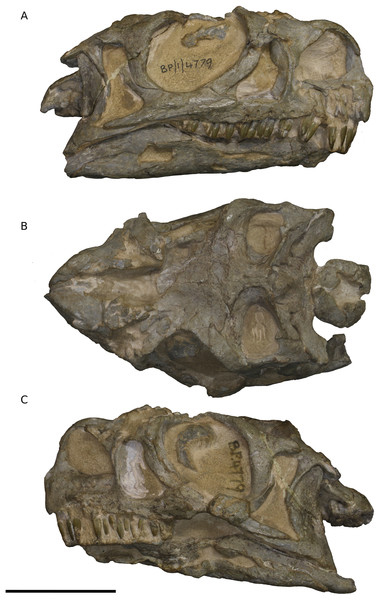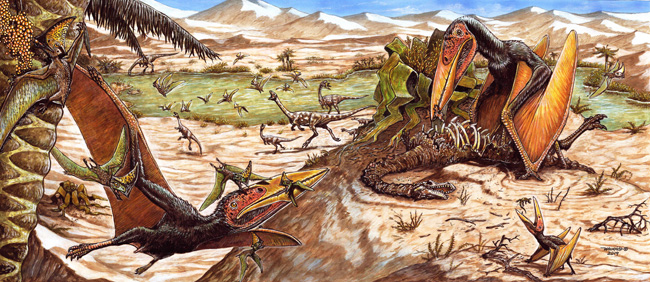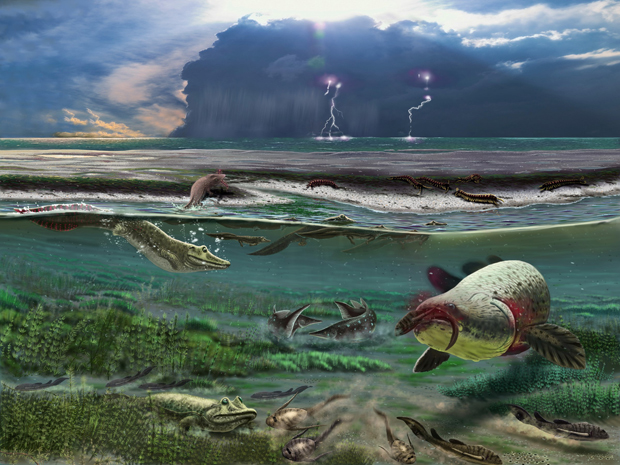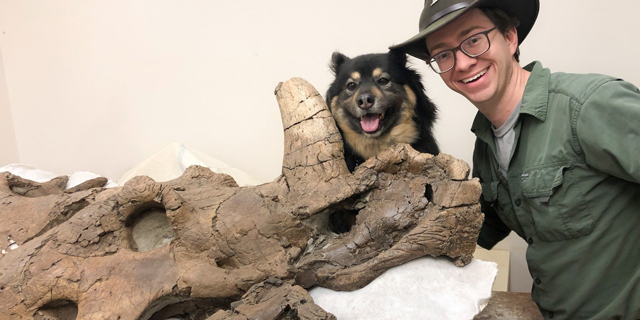Everything Dinosaur’s Popular Blog Posts of 2019 (Part 2)
Everything Dinosaur’s Top Ten Blog Posts of 2019 (Part 2)
Today, we conclude our review of the top ten blog posts written by Everything Dinosaur team members in 2019. We have produced a blog post for every day of the year and as a result we have covered a tremendous range of topics from new fossil discoveries, highlighting research, the introduction (and retirement) of prehistoric animal replicas, book reviews, artwork created by academic illustrators and scientific discoveries.
Here is our countdown of the top five.
5). Ngwevu intloko – New Dinosaur “Hiding in Plain Sight”
Over the summer, Everything Dinosaur published a wide range of articles. A new bizarre, shovel-mouthed duck-billed dinosaur (Aquilarhinus), was reported and news of a fast-running Triassic theropod from Switzerland (Notatesseraptor) broke. We had strange prehistoric parrots, an analysis of the cranial capacity of “parrot lizard” Psittacosaurus and herbivorous crocodylomorphs. However, number five on our list concerns the discovery of a new type of Triassic herbivorous dinosaur that was found in a museum cabinet.
Fossils once thought to represent an unusual specimen of Massospondylus (M. carinatus) in the collection of the University of Witwatersrand (South Africa), were assigned to their own genus. Student Kimberley Chapelle and colleagues identified a total of twenty-two characteristics that supported the establishment of a brand new dinosaur genus. The new dinosaur was named Ngwevu intloko, this member of the Sauropodomorpha had been hiding in plain sight within the vertebrate fossil collection of the University for more than three decades.
Views of the Skull of Ngwevu intloko
Picture credit: Kimberley Chapelle/University of Witwatersrand
4). Keresdrakon vilsoni – Toothless Pterosaur from an Ancient Desert Ecosystem
September and thirty days of blog posts covering stiff T. rex skulls and subsequently how the skull of T. rex may have helped it to keep cool, dinosaur model deliveries to hotels, the most complete dinosaur fossil from Japan (Kamuysaurus japonicus) and the Asian origins of Saurornitholestes, but our number four features a newly described species of pterosaur from Brazil.
Researchers, writing in the academic journal “Anais da Academia Brasileira de Ciências”, identified a new species of edentulous flying reptile that co-existed with the pterosaur Caiuajara and may have fed on its young. Described as part of a non-tapejarid lineage of pterosaurs outside the Tapejaromorpha, Keresdrakon provides a new perspective on the paleoecology of a Cretaceous desert environment.
Keresdrakon Life Reconstruction It Feeds on the Carcase of a Contemporary Dinosaur (Vespersaurus) whilst a Second Keresdrakon is Mobbed by Juvenile Caiuajara
Picture credit: Maurilio Oliveira
An honourable mention to Cryodrakon boreas the first pterosaur to be described which is unique to Canada.
3). A Potential Terrestrial Tetrapod that May Not Have Gone onto Land
In October, Everything Dinosaur team members covered the amazing TetZooCon event in London, the naming of a new, basal carcharodontosaurian theropod from Thailand (Siamraptor suwati) and the reclassification of crocodiles in New Guinea. A team of researchers, writing in “Nature” put forward an intriguing new hypothesis that some of the first vertebrates that were capable of terrestrial locomotion may have never left the water. Parmastega aelidae was a sharp-eyed predator that may have ambushed invertebrates that ventured too close to the sea.
With eyes positioned towards the top of their heads, Parmastega was capable of observing life on land and potential prey without leaving the water.
Life in a Late Devonian Coastal Lagoon (Sosnogorsk, Russia)
Picture credit: Mikhail Shekhanov for the Ukhta Local Museum
2). Unusual Styracosaurus Skull Might Change the Way New Dinosaurs are Identified
The first fossil evidence of feathered polar dinosaurs, plans to map extra-terrestrial space objects in a bid to prevent Earth impact events, limited edition dinosaur models, a new predatory dinosaur from Brazil – Gnathovorax cabreirai, all featured in October. A fossil ape from the Miocene of Germany, Poland’s first pliosaur, Rebor Komodo dragons, a new megaraptorid from “Down Under” and the discovery of a Styracosaurus skull that might just turn palaeontology on its head were also discussed. “Hannah” an asymmetrical Styracosaurus skull named after the pet dog of palaeontologist Scott Persons has cranial imperfections that could alter the way that scientists identify new species of dinosaur. Whoops, looks like there may have to be another revision of the Centrosaurinae.
Palaeontologist Scott Persons Poses with the Two “Hannahs” in His Life “Hannah” the pet dog and “Hannah” the Styracosaurus
Picture credit: Scott Persons/University of Alberta
1). Asfaltovenator vialidadi – A New Basal Allosauroid from Argentina
Our blog articles this month have covered such varied topics as galloping crocodilians, 7,000 Facebook “likes”, the announcement of new for 2020 Papo prehistoric animal figures, dinosaur teeth replacement, how to distinguish teenage tyrannosaurs and Mimodactylus libanensis, a new toothy pterosaur from the Late Cretaceous of Lebanon.
However, since we started this top ten countdown with a fossil discovery from North America and despite the focus on asymmetrical dinosaurs, we shall conclude with a dinosaur from the opposite end of the Americas.
Asfaltovenator vialidadi from the Cañadón Asfalto Formation (Chubut Province, Patagonia) roamed South America perhaps as early as 170 million years ago. Its discovery is important, as most Middle Jurassic theropods are only known from quite fragmentary material and this dinosaur, described as a basal allosauroid, has traits linking it to both the allosauroids and the megalosauroids. The fossils suggest that the Allosauroidea and the Megalosauroidea evolved from a common ancestor.
A Life Reconstruction of the Newly Described Asfaltovenator vialidadi
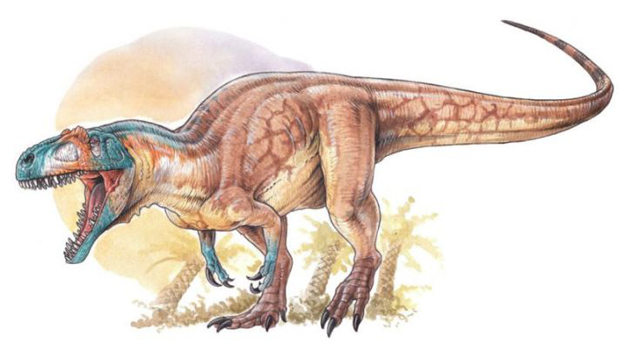
Picture credit: Gabriel Lio/Conicet
Team members at Everything Dinosaur look forward to posting up more blog articles that help to work out taxonomic relationships within the Dinosauria and improve our understanding of ancient life still further in the coming months.
The Everything Dinosaur website: Our Website.


